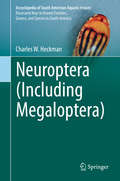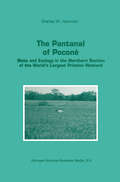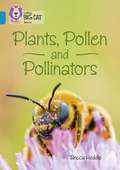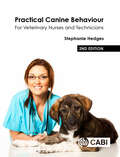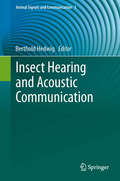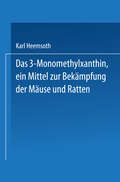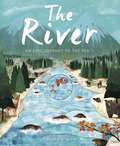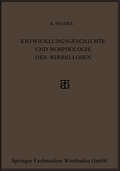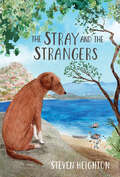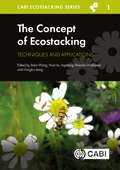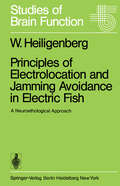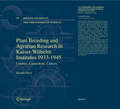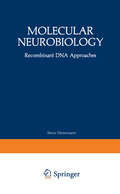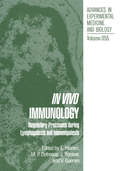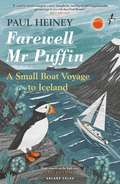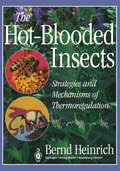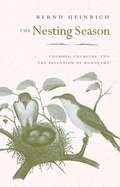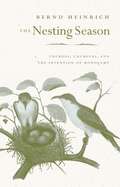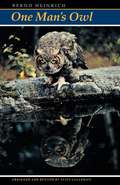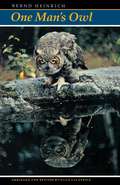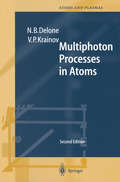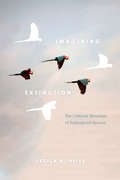- Table View
- List View
Neuroptera (Encyclopedia of South American Aquatic Insects)
by Charles W. HeckmanThis order once encompassed all insects with a complex network of wing veins, regardless of whether their metamorphosis was incomplete or complete. By the early 20th century, most of the species had been transferred to new orders, leaving only a small percentage of the insects once assigned to the Neuroptera remaining in that order. By the second half of the 20th century, some of the taxonomists began to believe that the fragmentation of this order had gone too far, and that the order Megaloptera needed to be grouped in some way with Neuroptera, either by making them suborders of the same order or by creating a superorder to accommodate both.This volume provides a discussion of both taxa, tentatively regrouping both in the order Neuroptera. While all known species of Megaloptera in South America have completely aquatic larval stages, few species in the suborder Planipennia, formerly called Neuroptera sensu stricto, are aquatic during any of their life stages. The most interesting of the exceptions are species in the family Sisyridae, some of which develop as larvae inside freshwater sponges.Because only a relatively small number of species are still included in Neuroptera sensu lato, this book provides keys to all known South American species that have been described well enough to be identified with any degree of certainty. Many species in the family Chloropidae, the neuropteran family with the greatest number of recognized species in South America, have proven to be valuable as biological controls for insect pests in agriculture. Their importance for tropical agriculture is another reason for including terrestrial species in this book. The series will continue with volumes providing keys to identify species of other South American orders, but in most cases, only aquatic insects can be included in the keys to the species.
The Pantanal of Poconé: Biota and Ecology in the Northern Section of the World’s Largest Pristine Wetland (Monographiae Biologicae #77)
by Charles W. HeckmanThere are many famous wetlands in the world that have been deemed important for the homeostasis ofthe biosphere and accorded some form ofprotected status in view of the richness of their flora and fauna. T}1e Pantanal, located almost directly in the center ofthe South American continent, is among the largest such wetlands in the world. It is, in fact, the largest wetland that is still in a nearly natural state and has not been extensively modified by man for agriculture. The extent of the region covered by flood waters at the end of each rainy season varies from year to year, sometimes considerably, so estimates of the exact area it occupies have varied enormously. The size of the 2 2 Pantanal has been reported to be between 80,000 km (Bonetto, 1975) and 250,000 km (Tundisi and Matsumura-Tundisi, 1985). The most co~on1y accepted estimates at the present time are approximately 130,000 to 140,000 km , supported by estimates made from Nimbus-7 satellite observations (Hamilton et al. , 1996). However, Por (1995) suggested that the area extending into Bolivia and Paraguay has not been satisfactorily 2 surveyed, leading him to accept the figure of 200,000 km as the area of the entire Pantanal, ineluding all of its extensions. The main reason for the year to year variation in the extent of the flooding is the considerable difference in timing of the rainfall on the watershed.
Title: Plants, Pollen and Pollinators (PDF)
by Becca HeddleYou probably know that bees and butterflies help to pollinate flowers. But did you also know that beetles, lizards and small mammals are also good pollinators? Read more about the animals that help to pollinate flowers - you might be surprised by what you find! * Topaz/Band 13 books offer longer and more demanding reads for children to investigate and evaluate. * An information book. * Curriculum Links: science
Practical Canine Behaviour: For Veterinary Nurses and Technicians
by Stephanie HedgesIn this book Stephanie Hedges draws on more than 20 years as a practicing veterinary nurse and her training as a Certificated Clinical Animal Behaviourist (CCAB). She provides a quick reference and practically relevant canine behaviour resource to meet both the specific needs of the veterinary nurse or technician and the needs of the wider general practice team. The new edition has been completely revised and updated to include: - New sections on canine emotions, the role of play, and how the canine senses affect a dog's perception of their world and their communication with others - A discussion of the relevance and limitations of breed in our understanding of dog behaviour - Updated and expanded behavioural first aid advice including factors to consider when assessing risk - A new chapter on the practice role in addressing fear of visiting the practice and veterinary interventions - A focus on the emotional welfare of dogs throughout Further topics include application of the 'trigger stacking' principle to reduce stress and aggression in practice, approaches to minimising restraint when handling, advice for puppy owners to prevent future problems, tips for running successful puppy socialization classes, and strategies for managing or addressing unwanted behaviour. Practical Canine Behaviour continues to provide an essential practical resource for the general veterinary practice team, dog trainers, groomers, dog walkers, rescue centre staff, kennel owners and all those who love and care for dogs.
Insect Hearing and Acoustic Communication (Animal Signals and Communication #1)
by Berthold HedwigThis volume provides a comprehensive selection of recent studies addressing insect hearing and acoustic communication. The variety of signalling behaviours and hearing organs makes insects highly suitable animals for exploring and analysing signal generation and hearing in the context of neural processing, ecology, evolution and genetics. Across a variety of hearing species like moths, crickets, bush-crickets, grasshoppers, cicadas and flies, the leading researchers in the field cover recent scientific progress and address key points in current research, such as: - How can we approach the evolution of hearing in insects and what is the developmental and neural origin of the auditory organs? - How are hearing and sound production embedded in the natural lifestyle of the animals, allowing intraspecific communication but also predator avoidance and even predation? - What are the functional properties of hearing organs and how are they achieved at the molecular, biophysical and neural levels? - What are the neural mechanisms of central auditory processing and signal generation? The book is intended for students and researchers both inside and outside of the fascinating field of bioacoustics and aims to foster understanding of hearing and acoustic communication in insects.
Das 3-Monomethylxanthin, ein Mittel zur Bekämpfung der Mäuse und Ratten: Inaugural-Dissertation
by Karl HeemsothDieser Buchtitel ist Teil des Digitalisierungsprojekts Springer Book Archives mit Publikationen, die seit den Anfängen des Verlags von 1842 erschienen sind. Der Verlag stellt mit diesem Archiv Quellen für die historische wie auch die disziplingeschichtliche Forschung zur Verfügung, die jeweils im historischen Kontext betrachtet werden müssen. Dieser Titel erschien in der Zeit vor 1945 und wird daher in seiner zeittypischen politisch-ideologischen Ausrichtung vom Verlag nicht beworben.
The River: An Epic Journey to the Sea (PDF)
by Patricia Hegarty Hanako ClulowFollow a little fish on her epic journey downriver, as she travels into the unknown. As the river winds through mountains, forests and plains, the little fish swims on. With stunning artwork and peep-through pages, this is a book to treasure.
Entwicklungsgeschichte und Morphologie der Wirbellosen
by Karl HeiderDieser Buchtitel ist Teil des Digitalisierungsprojekts Springer Book Archives mit Publikationen, die seit den Anfängen des Verlags von 1842 erschienen sind. Der Verlag stellt mit diesem Archiv Quellen für die historische wie auch die disziplingeschichtliche Forschung zur Verfügung, die jeweils im historischen Kontext betrachtet werden müssen. Dieser Titel erschien in der Zeit vor 1945 und wird daher in seiner zeittypischen politisch-ideologischen Ausrichtung vom Verlag nicht beworben.
The Stray and the Strangers
by Steven HeightonBased on a true story, a stray dog befriends an orphan boy in a refugee camp on a Greek island. The fishermen on Lesvos call her Kanella because of her cinnamon color. She’s a scrawny, nervous stray — easily intimidated by the harbor cats and the other dogs that compete for handouts on the pier. One spring day a dinghy filled with weary, desperate strangers comes to shore. Other boats follow, laden with refugees who are homeless and hungry. Kanella knows what that is like, and she follows them as they are taken to a makeshift refugee camp. There she comes to trust a bearded man, an aid worker, and gradually settles into a contented routine. Kanella grows healthy and confident. She has a job now — to keep watch over the people in her camp. One day, a little boy arrives and does not leave like the others. He seems to have no family and, like Kanella, he is taken in by the workers. He sleeps on a cot in the food hut, and Kanella keeps him warm and calm. When two new adults come to the camp. Kanella is ready to defend the boy from them, until she is pulled away by the bearded man. They are the boy’s parents, and now he must go with them. Eventually, the camp is dismantled, and Kanella finds herself homeless again. Until one night, huddled in the cold, she awakens to see two bright lights shining in her eyes — the headlights of a car. The bearded man has come back for her, and soon Kanella is on a journey, too, to a new home of her own. Key Text Features maps illustrations author's note Correlates to the Common Core State Standards in English Language Arts: CCSS.ELA-LITERACY.RL.5.6 Describe how a narrator's or speaker's point of view influences how events are described.
The Concept of Ecostacking: Techniques and Applications (Ecostacking Series)
by Heikki M.T. Hokkanen Dr Ingeborg Menzler-Hokkanen James D Blande Fanny Boerave Dr Daniel Carrillo Tomislav Cernava Xiaoyulong Chen Wen-Qiang Chu Gloria Gauthura Severin Hatt Jarmo K Holopainen Fathiya Khamis Pål Kvello Guang-Yun Li Dr Yaying Li Beatrice Muriithi Jinzhi Niu Levi Ombura Xian Wang Ziying Wang Qiu Yang Wei Yixia Wu Li Ya-Ying Kaijun ZhangEcostacking is a new concept and approach which aims to maximize the benefits of ecosystem service providers in cropping systems to help achieve the goal of long-term sustainable agriculture and food production. The term "ecostacking" means combining synergistically the beneficial services of functional biodiversity from all levels and types. It is a comprehensive approach, where the various ecosystem service providers are fully integrated with the rest of the cropping system including agronomic practices. It is an approach which goes beyond conventional Integrated Pest Management practises, and attempts to take advantage of all the functional biodiversity of a system. The main focus of ecostacking is on maximizing ecosystem services for biological control and pollination from beneficial arthropods, but the approach also utilizes other invertebrates (e.g., earthworms) as well as beneficial vertebrates such as bats, birds and small mammals. Microbes also provide invaluable ecosystem services including pest, disease, and weed control, either directly as components of "suppressive soils" or as plant colonizers (as endophytes or as epiphytic microbial flora). The ecostacking approach also aims to maximize other nature-provided services such as maintenance of soil health and nutrient cycling. The Concept of Ecostacking is the first book in a series which introduces ecostacking concepts to the reader and explores how this approach can be used in a variety of ways and in different cropping systems. The book defines this new concept and shows, using illustrative case studies from around the world, how ecostacking principles can be successfully employed in cropping systems in the open field, in greenhouses and in forestry. This book: · will serve as inspiration for developing further applications of this breakthrough technology for sustainable agricultural production. · is a must-read for everyone with an interest in developing sustainable crop protection systems and ecosystem management. · has been written and edited by the world's leading experts in this new and exciting endeavour.
Principles of Electrolocation and Jamming Avoidance in Electric Fish: A Neuroethological Approach (Studies of Brain Function #1)
by W. HeiligenbergThis booklet, together with the following two,-which are well under way and will succeed it at intervals of, we hope, no more than six months, sets the stage for a new editorial enterprise in the field of brain science. The accent is on the functional aspects of brains rather than on their develop ment, hence the title of the series. The central question being how neural activity is related to behavior, there will be, naturally, a wide scatter of sub jects, and Heiligenberg's monograph on electric fish may be considered typ ical of the expected standard deviation from the mean. Deviations in other directions may go as far as the sensory neuron, or brain theory, or aphasia, or farther. The next contributions planned for the series are: Precht, Neuronal Operations in the Vestibular System, and Movshon, Genes and Environment in the Development of the Visual Cortex. Our aim is to ap proach the central area by means of something like an evolving handbook of brain science. The individual monographs should describe promising and successful approaches, even in areas where the last word is far from being said. Besides originaI monographs and compounds of the author's own published papers, reviews are also we1come if they are more than the sum of the parts. The publisher promises speedy publication, and the editors will see that the manuscripts will be readable as well as interesting. Tübingen, Summer 1977 V.
Plant Breeding and Agrarian Research in Kaiser-Wilhelm-Institutes 1933-1945: Calories, Caoutchouc, Careers (Boston Studies in the Philosophy and History of Science #260)
by Susanne HeimA history of the agricultural sciences in Nazi Germany is presented in this book. The book analyzes scientific practice under the Nazi regime, Nazi agricultural policy and autarkic strategies, and the expansion policy in Eastern Europe. It offers new insights into the Auschwitz concentration camp and new perspectives on the cooperation between German elite scientists and the Nazi regime. The book goes on to dismiss the assumption that "Arian physics" were typical for Nazi Germany.
Molecular Neurobiology: Recombinant DNA Approaches (Current Topics in Neurobiology)
by Steve Heinemann James PatrickThis book is a collection of papers describing some of the first attempts to apply the techniques of recombinant DNA and molecular biology to studies of the nervous system. We believe this is an important new direction for brain research that will eventually lead to insights not pos sible with more traditional approaches. At first glance, the marriage of molecular biology to brain research seems an unlikely one because of the tremendous disparity in the histories of these two disciplines and the problems they face. Molecular biology is by nature a reductionist approach to biology. Molecular biologists have always tried to attack central questions in the most direct approach possible, usually in the most simple system available: a bacterium or a bacterial virus. Important experiments can usually be repeated quickly and cheaply, in many cases by the latest group of graduate students entering the field. The success of molecular biology has been so profound because the result of each important experiment has made the next critical question obvious, and usually answerable, in short order. Studies of the nervous system have a very different history. First, the human brain is what really interests us and it is the most complex structure that we know in biology. The central question is clear: How do we carry out higher functions such as learning and thinking? How ever, at present there is no widely accepted and testable theory of learn ing and no clear path to such a theory.
In Vivo Immunology: Regulatory Processes during Lymphopoiesis and Immunopoiesis (Advances in Experimental Medicine and Biology #355)
by E. Heinen M. P. Defresne J. Boniver V. GeenenThe 11th International Conference on Lymphoid Tissues and Immune Reactions was held in Spa-Liege (Belgium), from 4 to 8 July 1993. The regular devotees refer to these conferences as the "Germinal Centre Conferences or GCC". In the 1960s, the germinal centres were the subject of such considerable study and speculation that a group of dynamic people decided to devote an international conference centered on that topic. This led to the fIrst GCC organized in Bern in 1966. Following the success of this initial meeting, further sessions have been organized at regular intervals and, over the years, the scope of the GCC has been broadened. Nowadays, the GCC conferences are dedicated to in vivo immunology and deal mainly with cellular, functional and molecular aspects of the lymphoid system. The credo of these conferences is "in vivo veritas," implying that the sole investigation of components (like molecules or cell populations) only gives a partial truth. Ultimately, the components have to be explored in their global context in order to see how they interact with other parts and how they are integrated as a whole to ensure the homeostasis of the immune system. In 1966, the GCC lasted 3 days and included 57 contributions "which were discussed at length. " The present conference lasted 4 days and accommodated 2 honorary lectures, 80 free papers and 209 poster presentations. Out of those presentations, a selection was performed by the Chairpersons to compose the present volume.
Farewell Mr Puffin: A small boat voyage to Iceland
by Paul Heiney'It would be hard to imagine a more thoughtful, intelligent and companionable person to go to sea with than Paul Heiney.' Bill Bryson'High comedy on the high seas. Informative and warm and freezing. It's quite a combination.' Griff Rhys JonesThe puffin is the joker amongst the seabirds of the north Atlantic, but what is happening to this much-loved bird is far from a laughing matter.This is the conclusion of writer and broadcaster, Paul Heiney, who set sail from the east coast of England bound for Iceland, propelled by a desire to breathe the cool, clear air of the high latitudes, and to follow in the wake of generations of sailors who have made this often treacherous journey since the 13th century. In almost every harbour he tripped over maritime history and anecdote, and came face to face with his own past as he sailed north along his childhood coastline of east Yorkshire towards the Arctic Circle.But there was one major thing missing from this voyage - the sight of puffins. They are remarkable birds, uplifting as a ray of sunshine after a storm. To see them and share their waters was also part of Heiney's ambition. Imagine then his disappointment when, first, no puffins appeared off the Farne Islands, then none to be seen on puffin hotspots like Orkney. When he failed to see puffins on Iceland, it was the last straw, and he started to become seriously concerned. Heiney senses that a new chapter is about to be written, and it is one in which we may have to say farewell to the puffin forever.This book is rich in travel and sailing narrative, natural and social history, and with a strong undercurrent of good humour. It provides not only an insight into the private life of the puffin, but an honest portrait of human life on the ocean waves, as well as a reflection on what we might lose if the puffin disappears from our icy northern waters.
Farewell Mr Puffin: A small boat voyage to Iceland
by Paul Heiney'It would be hard to imagine a more thoughtful, intelligent and companionable person to go to sea with than Paul Heiney.' Bill Bryson'High comedy on the high seas. Informative and warm and freezing. It's quite a combination.' Griff Rhys JonesThe puffin is the joker amongst the seabirds of the north Atlantic, but what is happening to this much-loved bird is far from a laughing matter.This is the conclusion of writer and broadcaster, Paul Heiney, who set sail from the east coast of England bound for Iceland, propelled by a desire to breathe the cool, clear air of the high latitudes, and to follow in the wake of generations of sailors who have made this often treacherous journey since the 13th century. In almost every harbour he tripped over maritime history and anecdote, and came face to face with his own past as he sailed north along his childhood coastline of east Yorkshire towards the Arctic Circle.But there was one major thing missing from this voyage - the sight of puffins. They are remarkable birds, uplifting as a ray of sunshine after a storm. To see them and share their waters was also part of Heiney's ambition. Imagine then his disappointment when, first, no puffins appeared off the Farne Islands, then none to be seen on puffin hotspots like Orkney. When he failed to see puffins on Iceland, it was the last straw, and he started to become seriously concerned. Heiney senses that a new chapter is about to be written, and it is one in which we may have to say farewell to the puffin forever.This book is rich in travel and sailing narrative, natural and social history, and with a strong undercurrent of good humour. It provides not only an insight into the private life of the puffin, but an honest portrait of human life on the ocean waves, as well as a reflection on what we might lose if the puffin disappears from our icy northern waters.
The Hot-Blooded Insects: Strategies and Mechanisms of Thermoregulation
by Bernd Heinrich"From one man's persistent and elegant probing of the temperature biology of bees, we have been led to a deeper understanding of the whole biology of many insect taxa, and of their interactions with ecological and environmental stresses: all who work at the interfaces of physiology, ecology and behaviour have cause to be grateful, and all should certainly read this book." (Trends in Ecology & Evolution) "An outstanding source of information, and can be read with profit and satisfaction by the professional biologist and interested amateur alike." (Nature)
The Nesting Season: Cuckoos, Cuckolds, And The Invention Of Monogamy
by Bernd HeinrichOne of the world’s great naturalists and nature writers, Bernd Heinrich shows us how the sensual beauty of birds can open our eyes to a hidden evolutionary process.
The Nesting Season: Cuckoos, Cuckolds, And The Invention Of Monogamy
by Bernd HeinrichOne of the world’s great naturalists and nature writers, Bernd Heinrich shows us how the sensual beauty of birds can open our eyes to a hidden evolutionary process.
One Man's Owl: (Abridged Edition)
by Bernd HeinrichThis engaging chronicle of how the author and the great horned owl "Bubo" came to know one another over three summers spent in the Maine woods--and of how Bubo eventually grew into an independent hunter--is now available in an edition that has been abridged and revised so as to be more accessible to the general reader.
One Man's Owl: Abridged Edition
by Bernd HeinrichThis engaging chronicle of how the author and the great horned owl "Bubo" came to know one another over three summers spent in the Maine woods--and of how Bubo eventually grew into an independent hunter--is now available in an edition that has been abridged and revised so as to be more accessible to the general reader.
The Regulation of Cellular Systems
by Reinhart Heinrich Stefan SchusterThere is no doubt that nowadays, biology benefits greatly from mathematics. In particular, cellular biology is, besides population dynamics, a field where tech niques of mathematical modeling are widely used. This is reflected by the large number of journal articles and congress proceedings published every year on the dynamics of complex cellular processes. This applies, among others, to metabolic control analysis, where the number of articles on theoretical fundamentals and experimental applications has increased for about 15 years. Surprisingly, mono graphs and textbooks dealing with the modeling of metabolic systems are still exceptionally rare. We think that now time is ripe to fill this gap. This monograph covers various aspects of the mathematical description of enzymatic systems, such as stoichiometric analysis, enzyme kinetics, dynamical simulation, metabolic control analysis, and evolutionary optimization. We believe that, at present, these are the main approaches by which metabolic systems can be analyzed in mathematical terms. Although stoichiometric analysis and enzyme kinetics are classical fields tracing back to the beginning of our century, there are intriguing recent developments such as detection of elementary biochemical syn thesis routes and rate laws for the situation of metabolic channeling, which we have considered worth being included. Evolutionary optimization of metabolic systems is a rather new field with promising prospects. Its goal is to elucidate the structure and functions of these systems from an evolutionary viewpoint.
Imagining Extinction: The Cultural Meanings of Endangered Species
by Ursula K. HeiseWe are currently facing the sixth mass extinction of species in the history of life on Earth, biologists claim—the first one caused by humans. Activists, filmmakers, writers, and artists are seeking to bring the crisis to the public’s attention through stories and images that use the strategies of elegy, tragedy, epic, and even comedy. Imagining Extinction is the first book to examine the cultural frameworks shaping these narratives and images. Ursula K. Heise argues that understanding these stories and symbols is indispensable for any effective advocacy on behalf of endangered species. More than that, she shows how biodiversity conservation, even and especially in its scientific and legal dimensions, is shaped by cultural assumptions about what is valuable in nature and what is not. These assumptions are hardwired into even seemingly neutral tools such as biodiversity databases and laws for the protection of endangered species. Heise shows that the conflicts and convergences of biodiversity conservation with animal welfare advocacy, environmental justice, and discussions about the Anthropocene open up a new vision of multispecies justice. Ultimately, Imagining Extinction demonstrates that biodiversity, endangered species, and extinction are not only scientific questions but issues of histories, cultures, and values.
Imagining Extinction: The Cultural Meanings of Endangered Species
by Ursula K. HeiseWe are currently facing the sixth mass extinction of species in the history of life on Earth, biologists claim—the first one caused by humans. Activists, filmmakers, writers, and artists are seeking to bring the crisis to the public’s attention through stories and images that use the strategies of elegy, tragedy, epic, and even comedy. Imagining Extinction is the first book to examine the cultural frameworks shaping these narratives and images. Ursula K. Heise argues that understanding these stories and symbols is indispensable for any effective advocacy on behalf of endangered species. More than that, she shows how biodiversity conservation, even and especially in its scientific and legal dimensions, is shaped by cultural assumptions about what is valuable in nature and what is not. These assumptions are hardwired into even seemingly neutral tools such as biodiversity databases and laws for the protection of endangered species. Heise shows that the conflicts and convergences of biodiversity conservation with animal welfare advocacy, environmental justice, and discussions about the Anthropocene open up a new vision of multispecies justice. Ultimately, Imagining Extinction demonstrates that biodiversity, endangered species, and extinction are not only scientific questions but issues of histories, cultures, and values.
Imagining Extinction: The Cultural Meanings of Endangered Species
by Ursula K. HeiseWe are currently facing the sixth mass extinction of species in the history of life on Earth, biologists claim—the first one caused by humans. Activists, filmmakers, writers, and artists are seeking to bring the crisis to the public’s attention through stories and images that use the strategies of elegy, tragedy, epic, and even comedy. Imagining Extinction is the first book to examine the cultural frameworks shaping these narratives and images. Ursula K. Heise argues that understanding these stories and symbols is indispensable for any effective advocacy on behalf of endangered species. More than that, she shows how biodiversity conservation, even and especially in its scientific and legal dimensions, is shaped by cultural assumptions about what is valuable in nature and what is not. These assumptions are hardwired into even seemingly neutral tools such as biodiversity databases and laws for the protection of endangered species. Heise shows that the conflicts and convergences of biodiversity conservation with animal welfare advocacy, environmental justice, and discussions about the Anthropocene open up a new vision of multispecies justice. Ultimately, Imagining Extinction demonstrates that biodiversity, endangered species, and extinction are not only scientific questions but issues of histories, cultures, and values.
